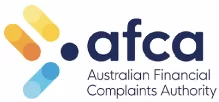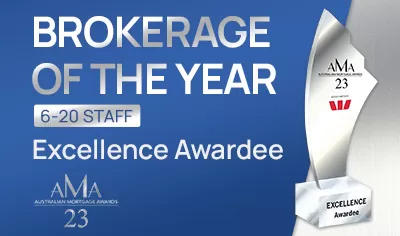Start living again.
Fund your retirement with a Reverse Mortgage loan.

Rated 4.9 stars on
No Monthly Repayments
Easy loan approval
Retain Home Ownership
5,000+ Happy Customers
Get your results in 60 seconds to see if you qualify for a Reverse Mortgage
Australia’s #1 Reverse Mortgage loan broker
Since launching in 2006, Seniors First has helped thousands of people over 60 release home equity for cash.
And it's no wonder, because there are good reasons why it’s better to use a broker when applying for a Reverse Mortgage loan:
Since launching in 2006, Seniors First has helped thousands of people over 60 release home equity for cash.
And it's no wonder, because there are good reasons why it’s better to use a broker when applying for a Reverse Mortgage loan:
By using Seniors First, you also gain access to multiple lenders and expert advice to make the best financial decisions.
Reverse Mortgages Just Got Cheaper!
Rates have decreased by
0.50%
in the recent months!
This means that
On a loan of $100,000, this would deliver a saving of approximately $12,000 over 10 years. (if applied for the whole term)

Rated 4.9 stars on
“Sincere thanks to Andrew and Seniors First .. the loan has been life changing.”
Deborah Collett
You have given me outstanding service, guidance and help. You made clear to me the advantages, disadvantages and outcomes of a Reverse Mortgage.
You reassured me about the right timing and steps to take in the whole process.
I couldn't be more grateful and very satisfied knowing that my home loan is paid and I have enough to live comfortably.
I felt extremely comfortable working through the process. There was no pressure to continue but I am extremely glad I decided to proceed.
Seniors First were very considerate and concerned that I completely understood the pros and cons of the decision I was making. I felt at ease discussing the very involved process through very friendly and supportive phone conversations and via many emails. I greatly appreciated how I was kept up to date with the applications progress. Contact about any concerns was always welcome.
I unreservedly recommend their thorough unquestionable service. I am amazed at how smooth the process was, especially as it resulted in a very positive outcome.
Thank you for your friendly, unbelievable guidance and support.
I had heard about reverse mortgages a number of times over the past couple of years, very different from a standard mortgage. It made me a little nervous, but I did research. I rang a couple of brokers, what’s your email, if you have any questions, ring me back.
Adam Oakley from Seniors First, was the first one to truly speak to me. Answered all my weird questions, gave me so much information, and helped me all the way. Some critical information such as Centrelink, I checked up on. Adam was spot on with what he had told me. Do your own research, government web sites, brokers, and lenders so you can understand what is being explained. Taking on anything financial is a huge step, being guided (handheld, in my case) by Adam is a blessing.
The kindness and understanding shown by my broker made the entire process smooth and reassuring. He truly listened to my needs and worked hard to achieve the best possible outcome for my situation. I’m genuinely grateful for the support I received and would highly recommend Seniors First for anyone considering their financial options in later life.
Richard Chapman explained very clearly from the outset how this works and held our hands throughout the whole process, even when it got a little tricky with an outstanding level of professionalism and patience i might add.
If you are reading this and are contemplating a reverse mortgage look no further call Richard Chapman at seniors first.....first.
Dean who I dealt with to attain my Reverse Mortgage was the most friendly courteous and knowledgeable person and he is an absolute credit to Seniors First.
His knowledge and excellent PR skills were wonderful and nothing was too much trouble and he was always available to answer any questions I asked if him.
I would certainly recommend Seniors First and in particular Dean Hukin to anyone considering a Reverse Mortgage.
What is a Reverse
Mortgage?
Reverse Mortgages are loans for pensioners and retirees designed specifically for older borrowers who are typical ‘asset rich’ but ‘cash poor’.
Known variously as ‘senior’s loans’, ‘reverse home loans’, and ‘senior’s finance’, Reverse Mortgages are the most popular form of home equity release in Australia.
Reverse Mortgages allow people from the age of 55 to convert the equity in their property into cash for any worthwhile purpose. No income is required to qualify. Although interest is charged like any loan, the borrower is not required to make repayments (although they can usually make voluntary payments if they wish).
What are the benefits of a Reverse Mortgage
Cash for Retirement
You can use the money for almost anything that will help you enjoy your golden years.
No Need to Move Out
Stay in your home for as long as you want.
Retain Ownership
Any potential increase in property value will still be in your name.
No Repayments Required
You may choose to pay the loan from the future sale of your home.
No Negative Equity Guarantee*
You and your home are protected subject to T&Cs.
Flexible Drawdown Options
You can access the loan as a lump sum, cash reserve, or regular income.
Why Choose Us?
Others Lenders & Brokers
Download your free Reverse Mortgage guide
(Downloaded over 20,000 times since 2008)
The draw down options
Seniors First offers flexible drawdown options depending on your preferences and needs.
Our lenders can pay you a lump sum money at the start of your loan. Policies between lenders vary, but some have a minimum drawdown for this option is of $10,000, unless you are planning to use the money for in-home aged care.
This option is ideal for debt consolidation, home renovation, new car purchase, or even a holiday.
On top of the lump sum, you can receive the proceeds as needed through the other available options.
Receiving regular advances is ideal if you are planning to draw on your loan gradually, to supplement your retirement income. It's great if you need help covering living expenses.
This option will allow you to set a regular drawdown payment (monthly, quarterly, or yearly) for up to 10 years.
The regular amount you receive feels like 'income' but it is actually a small portion of your home equity. You can set the amount you receive from hundreds, to thousands of dollars each month. The limit is determined by the value of your home, your age and the term schedule.
You can unlock your home equity to set up a cash reserve that you can easily access anytime you want.
The good thing about this option is that you will only pay interest on the drawn amount.
Depending on the lender, there may be no minimum drawdown amount on a cash reserve facility. Some lenders even allow you to access this money directly by debit card at ATM's.
Our partners



Check your eligibility
Answer a few short questions to find out if you qualify for a reverse mortgage.
Frequently asked questions
Allow about $1,500 – $2,000 in total to establish your Reverse Mortgage loan.
This amount includes the main costs such as the lender application fee, government charges, legal advice fees, and any broker fees.
This is an estimate only; you could pay more depending on the circumstances. If you are low on cash, you can usually pay these Reverse Mortgage costs from the loan proceeds.
Reverse Mortgage lenders now offer a ‘line of credit’ option.
This is a very positive development that empowers the borrower with complete control over when they take the funds and how much.
You can have all the funds available all of the time, but you attract ZERO interest until you need to use it, and then only on the money you draw. This is great for emergencies and unexpected costs.
The Reverse Mortgage loan is due for payment when you pass away. If your estate or heirs cannot pay the loan, the lender may put the property on sale.
Interestingly, all Reverse Mortgage lenders are now required by law to provide a guarantee that should the debt grow to such level over time that it exceeds the value of the security property realised at the sale. Neither the borrower nor beneficiaries of the estate can be pursued for this shortfall after the sale has been concluded (as long as the borrower is not in default of the loan contract).
Put simply, if the sale of the security property is not enough to cover the debt, the lender wears the loss.
In addition, the lender cannot force the borrower from the property if they think the debt may have grown to a level where a shortfall may occur.
If you wish to access the equity in your home, the main alternative to Reverse Mortgage is still to sell and downsize your home. However, such a transaction will necessarily incur substantial transfer costs such as stamp duty and agent fees, and you may be required to move away from your neighbourhood into a cheaper suburb.
Other product alternatives to Reverse Mortgages are emerging increasingly.One alternative is the ‘home reversion schemes’ where you can sell a share of your home in return for cash. This may allow you to stay in your home without selling or accumulating debt.Home reversion schemes in Australia are not yet widely available. To enquire about home reversion schemes and other alternatives to reverse mortgages, complete this form.
It is possible in many cases to structure your Reverse Mortgage or equity release plan so that it does not reduce the amount of pension income you currently receive. However, the outcome will depend on your individual circumstances and Seniors First is not permitted to advise you in this regard. ALL borrowers in receipt of government pension are directed to speak with a Financial Information Services officer at a Centrelink office before applying.
Some lenders offer an option called ‘Protected Equity’, which guarantees that a requested proportion of equity is preserved for beneficiaries (it also means you can’t borrow as much). If you choose a loan without protected equity, then the amount of equity you will leave will be determined by the following factors:
- The term of the loan/how long you live
- Interest rate movements
- Growth rates in the value of your property
Although the interest will accumulate and compound, based on the past trends, your property should also increase in value over time, offsetting the increasing loan balance.



